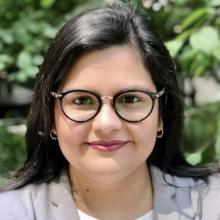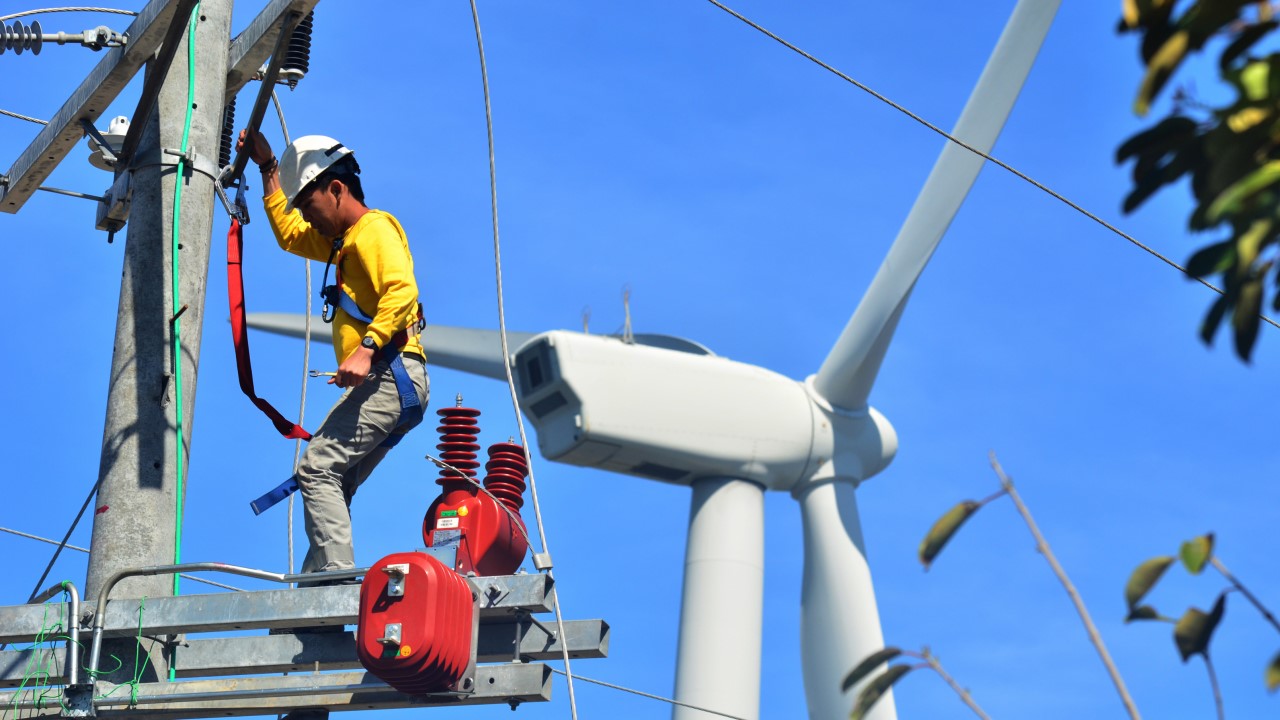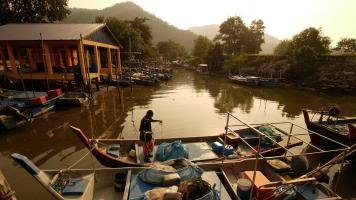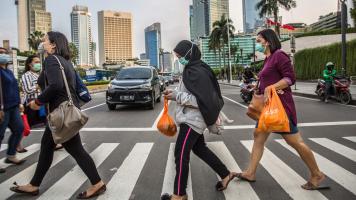Financing Climate Action: Three Priorities for Southeast Asia

Consultant, Asian Development Bank (ADB)

Infrastructure Specialist (Innovation and Green Finance), Southeast Asia Department, Asian Development Bank (ADB)

By 2030, the region’s green economy will contribute $1 trillion in economic opportunities, and potentially contribute 6%–8% growth in GDP from new growth areas. Photo credit: ADB.
Southeast Asia needs to rapidly mobilize private funds to meet the region's financial needs of $210 billion per year in adaptation and mitigation investments.
This article is published in collaboration with the ASEAN Catalytic Green Finance Facility.
We must act on climate change now or the damage could be irreversible by 2030. Recent reports highlight that the world may warm by 4.4°C by the year 2100, and by that same year, 50–75% of the global population could be exposed to life-threatening climatic conditions. Even more worrisome is the impact in Southeast Asia, a region already highly vulnerable to climate risks. The coronavirus disease (COVID-19) pandemic has demonstrated the need to build back stronger and more resilient to climate change to stave off future shocks.
The biggest challenge, though, is to fulfill Southeast Asia's financial needs of $210 billion per year in adaptation and mitigation investments, which represents 5.7% of the region’s gross domestic product (GDP). The key is to rapidly mobilize private funds because capital is not flowing at the scale required.
Building back greener is also a great business opportunity. By 2030, the region’s green economy will contribute $1 trillion in economic opportunities, and potentially contribute 6%–8% growth in GDP from new growth areas.
"But there is good news: Capital wants to move." — Sean Kidney, CEO and Founder, Climate Bonds Initiative
So where should the road to financing a green recovery begin?
Action is needed on three fronts.
1. Policy and frameworks: Enabling finance to flow
Firstly, it is necessary to develop a conceptual structure of "green finance," under which investors can assess the risks and returns of green investments and institutions can design a green agenda for their business operations.
In the Philippines, the Bangko Sentral ng Pilipinas (BSP) is leading the way in designing strategies to green the national financial system and mobilizing banks to take action. The Environmental and Social Risk Management Framework (Circular No. 1128) and the Sustainable Finance Framework (Circular No. 1085) support financial institutions to embed sustainability into their governance and reporting and take account of environmental and climate risks in their operations.
"Part of the role of the BSP is to create an enabling policy environment to channel financing to sustainable investments and projects." —Lyn Javier, Assistant Governor, Bangko Sentral ng Pilipinas
As a region, the Association of Southeast Asian Nations (ASEAN) is making major strides in a common definition of green finance which is essential to guide investors and capital toward green investments. The ASEAN Taxonomy for Sustainable Finance, an effort of ASEAN financial regulators and coordinated by the Sustainable Finance Institute Asia, acts as an inclusive framework to define "green" for ASEAN countries which is robust but flexible so as to apply to member states with different socio-economic circumstances.
2. Financing platforms: Collating investors and building pipelines
Secondly, this enabling framework allows for the origination of bankable and green pipelines.
The ASEAN Catalytic Green Finance Facility is a $2 billion regional green finance vehicle under the ASEAN Infrastructure Fund designed to accelerate the development of bankable green infrastructure projects by better utilizing public funds and catalyzing private investments. With a focus on the active origination of projects, ACGF supports the Blue SEA Finance Hub which aims to accelerate the development of a sustainable regional blue economy and catalyze flows of capital into bankable blue projects.
"Regional vehicles bring together decision makers through a common platform and serve as a catalyst to replicate regional initiatives at country and provincial level." —Anouj Mehta, Country Director, Thailand, ADB
SDG Indonesia One, a national financing vehicle managed by PT Sarana Multi Infrastruktur (PT SMI), combines public and private funds to be channeled into infrastructure projects related to the Sustainable Development Goals (SDG). Under this platform, the SDG Indonesia One Green Finance Facility has been developed by the Asian Development Bank (ADB) and PT SMI, and with an initial financing of $150 million, the facility is expected to mobilize $1 billion for a pipeline of green and sustainable projects.
3. Financing Instruments: Leveraging capital
Thirdly, in the face of limited public resources, green bonds are a key instrument in tapping institutional capital and have gained significant momentum across the region.
In ASEAN, the sustainability bond issuance market reached a record high of $12.1 billion in 2020, a 5.2% year-on-year increase from 2019, with an increasing number of issuers issuing green bonds.
Recent examples of green bonds issued in the region include the Bank of the Philippine Islands CHF100m public Swiss franc-denominated bond for eligible green projects, which attracted significant interest from investors.
Next steps for scaling up green finance
These three key aspects—policies, platforms, and instruments—need to be tackled together in order to accelerate action on climate change and a green recovery. Taxonomies facilitate investors’ understanding of what counts as green or transition projects and help spur more green bonds. Regional and national de-risking platforms support the origination of a pipeline of bankable projects that could be supported by bonds and other financing instruments, and further develop capital markets. Collaboration, cooperation, and partnerships between ASEAN countries will be key in delivering the green finance ecosystem that the region needs.
This post is based on the panel session Accelerating Climate Finance for Green Recovery in Southeast Asia on 16 March at the Southeast Asia Development Symposium (SEADS) 2022. The session was moderated by Naeeda Crishna Morgado, and included interventions from Anouj Mehta, Country Director, Thailand, ADB; Lyn Javier, Assistant Governor, Bangko Sentral ng Pilipinas; Sean Kidney, CEO, Climate Bonds Initiative; Eugene Wong, CEO, Sustainable Finance Institute Asia; and Edwin Syahruzad, President Director, PT Sarana Multi Infrastruktur.
The authors, Gema Sancho Miñana and Naeeda Crishna Morgado, are infrastructure specialists for innovation and green finance at ADB's Southeast Asia Department.
For more updates about the green development finance sector, subscribe to ACGF News.

Gema Sancho-Miñana Bertomeu
Consultant, Asian Development Bank (ADB)Gema Sancho-Miñana Bertomeu is involved with the knowledge and capacity building of the ASEAN Catalytic Green Finance (ACGF) facility, aiming to lead the thought dialogue in green, blue, and innovative finance. Prior to her current role, she was a trade analyst at the Economic Office of the Embassy of Spain in Manila and also has experience in corporate affairs, regulatory issues, and sustainability in Europe.

Naeeda Crishna Morgado
Infrastructure Specialist (Innovation and Green Finance), Southeast Asia Department, Asian Development Bank (ADB)Naeeda Crishna Morgado specializes in green investment and climate policy in developing Asia, based in Beijing. Working as an independent expert since 2018, she supports the Southeast Asia Department’s work on designing innovative finance instruments and manages strategy and partnerships for the ASEAN Catalytic Green Finance Facility (ACGF).

ASEAN Catalytic Green Finance Facility (ACGF)
The ACGF is an ASEAN Infrastructure Fund initiative supporting governments in Southeast Asia to prepare and finance infrastructure projects that promote environmental sustainability and contribute to climate change goals. The ACGF is owned by ASEAN governments and ADB and is managed by ADB’s Southeast Asia Green Finance Hub.

